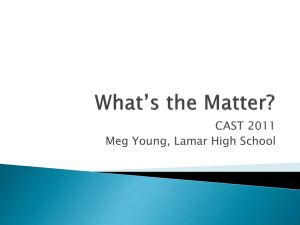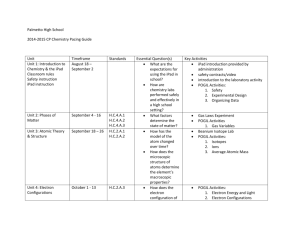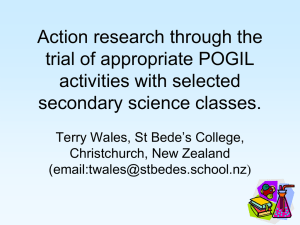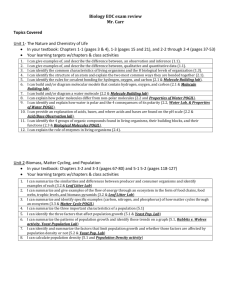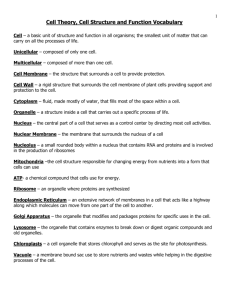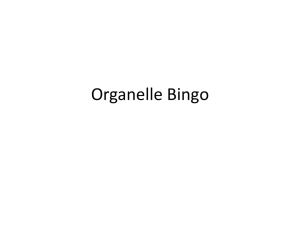Biology 1st semester final exam review Mr. Carr Topics Covered
advertisement
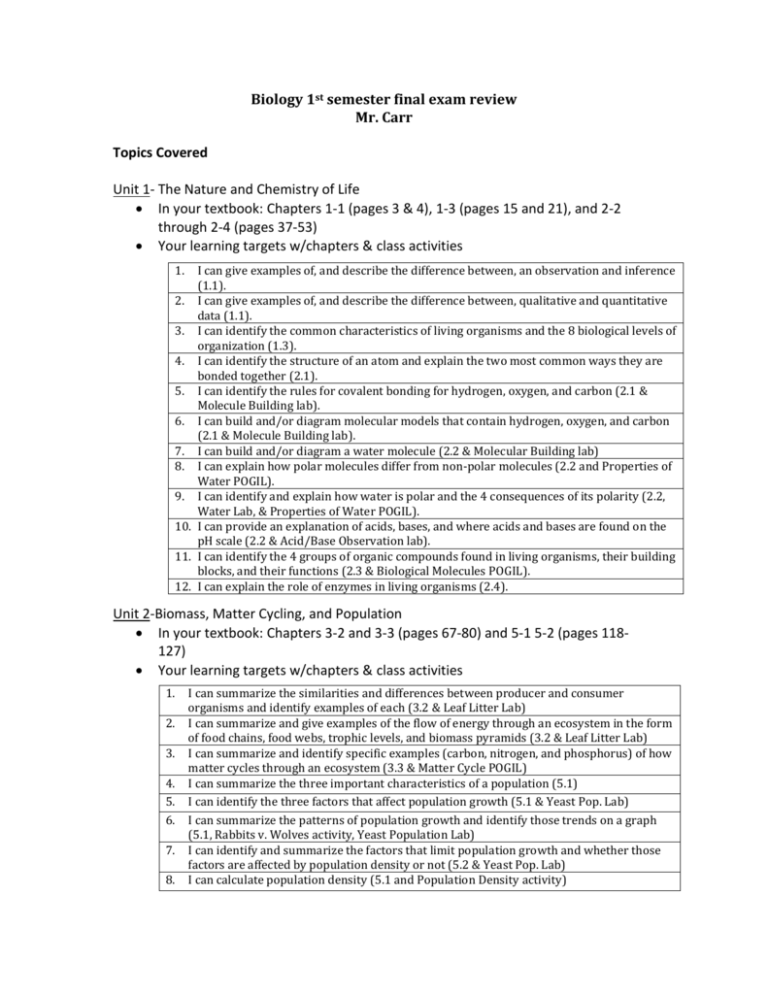
Biology 1st semester final exam review Mr. Carr Topics Covered Unit 1- The Nature and Chemistry of Life In your textbook: Chapters 1-1 (pages 3 & 4), 1-3 (pages 15 and 21), and 2-2 through 2-4 (pages 37-53) Your learning targets w/chapters & class activities 1. I can give examples of, and describe the difference between, an observation and inference (1.1). 2. I can give examples of, and describe the difference between, qualitative and quantitative data (1.1). 3. I can identify the common characteristics of living organisms and the 8 biological levels of organization (1.3). 4. I can identify the structure of an atom and explain the two most common ways they are bonded together (2.1). 5. I can identify the rules for covalent bonding for hydrogen, oxygen, and carbon (2.1 & Molecule Building lab). 6. I can build and/or diagram molecular models that contain hydrogen, oxygen, and carbon (2.1 & Molecule Building lab). 7. I can build and/or diagram a water molecule (2.2 & Molecular Building lab) 8. I can explain how polar molecules differ from non-polar molecules (2.2 and Properties of Water POGIL). 9. I can identify and explain how water is polar and the 4 consequences of its polarity (2.2, Water Lab, & Properties of Water POGIL). 10. I can provide an explanation of acids, bases, and where acids and bases are found on the pH scale (2.2 & Acid/Base Observation lab). 11. I can identify the 4 groups of organic compounds found in living organisms, their building blocks, and their functions (2.3 & Biological Molecules POGIL). 12. I can explain the role of enzymes in living organisms (2.4). Unit 2-Biomass, Matter Cycling, and Population In your textbook: Chapters 3-2 and 3-3 (pages 67-80) and 5-1 5-2 (pages 118127) Your learning targets w/chapters & class activities 1. 2. 3. 4. 5. 6. 7. 8. I can summarize the similarities and differences between producer and consumer organisms and identify examples of each (3.2 & Leaf Litter Lab) I can summarize and give examples of the flow of energy through an ecosystem in the form of food chains, food webs, trophic levels, and biomass pyramids (3.2 & Leaf Litter Lab) I can summarize and identify specific examples (carbon, nitrogen, and phosphorus) of how matter cycles through an ecosystem (3.3 & Matter Cycle POGIL) I can summarize the three important characteristics of a population (5.1) I can identify the three factors that affect population growth (5.1 & Yeast Pop. Lab) I can summarize the patterns of population growth and identify those trends on a graph (5.1, Rabbits v. Wolves activity, Yeast Population Lab) I can identify and summarize the factors that limit population growth and whether those factors are affected by population density or not (5.2 & Yeast Pop. Lab) I can calculate population density (5.1 and Population Density activity) Unit 3- The Cell & DNA In your textbook: Chapters 7-1 through 7-3 (pages 169-189) and 12-1 (pages 291294) Your learning targets w/chapters & class activities 1. 2. 3. 4. 5. 6. 7. 8. 9. I can describe the three parts of the Cell Theory (7.1). I can summarize the similarities and differences between prokaryotic and eukaryotic cells (7.1). I can recognize and label the key organelles (wall, membrane, nucleus, mitochondria, chloroplast, ribosome, ER, golgi) of both plant and animal cells (7.2, Organelle POGIL, organelle diagram) I can explain the function of the key organelles (wall, membrane, nucleus, mitochondria, chloroplast, lysosome, ribosome, ER, golgi) of both plant and animal cells (7.2, Organelle POGIL, organelle diagram) I can describe and label the make-up of the cell membrane (7.3, Membrane diagram, Membrane Structure & Function POGIL, Transport in Cells POGIL). I can describe how materials get into and out of a cell with diffusion or active transport (7.3 Membrane Structure & Function POGIL, Transport in Cells POGIL, Egg & Cell Size Labs). I can explain why cells are mostly small in size (Cell Size Lab). I can recognize and label a molecule of DNA (12.1, DNA WebQuest, & DNA Licorice activity) I can state the importance of DNA via the Central Dogma of Molecular Biology (DNA to RNA to Protein) How & what to study How you study is up to you. Each person learns differently, but the important thing is to put in some time (a minimum of 3 to 4 hours between now and next Tuesday) reviewing what we’ve covered in biology so far this year. Review the class activities & labs listed in the learning targets. If you’ve kept an organized lab journal, these should be easy to find. If not, look for them on my webpage under the homework link. Use your textbook! The end of each chapter contains a summary of key points and practice tests. USE THESE RESOURCES! Get together with classmates and quiz each other. As you study take notes on topics you don’t understand. Use your resources (textbook, lab journal, etc) or the internet. There is a HUGE amount of online information about the topics we’ve studied so far. I recommend bozemanscience.com. If that doesn’t help, ask me about it during our class review next week. In class review and practice exam on Monday and Tuesday.
